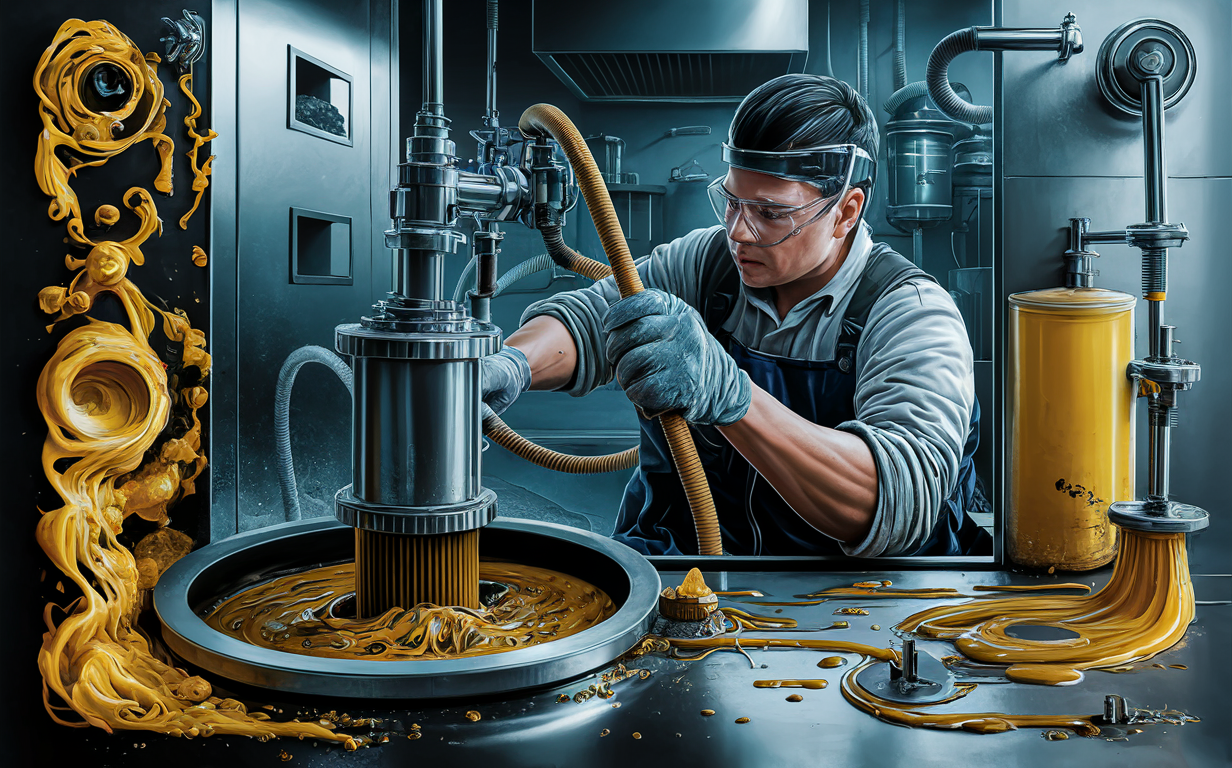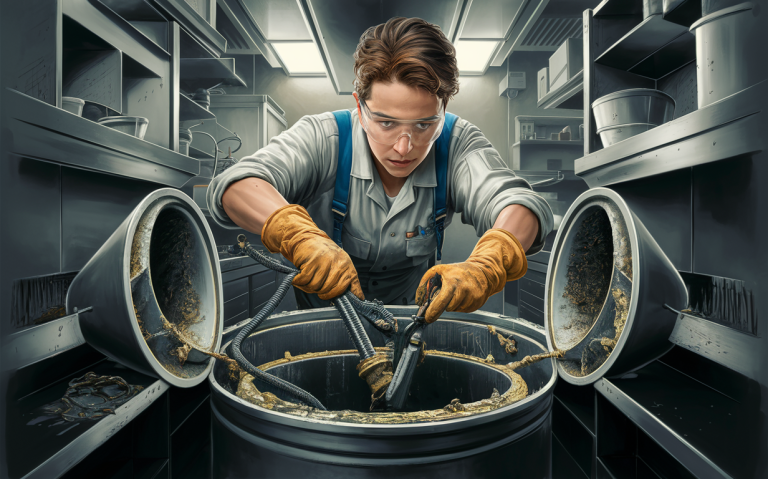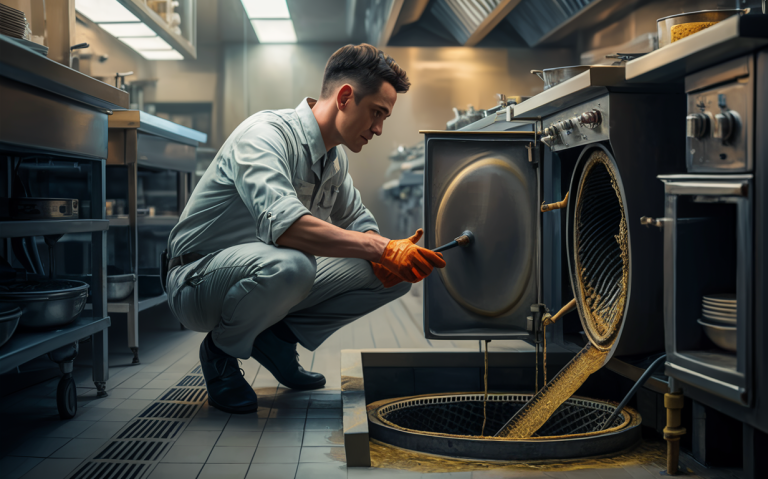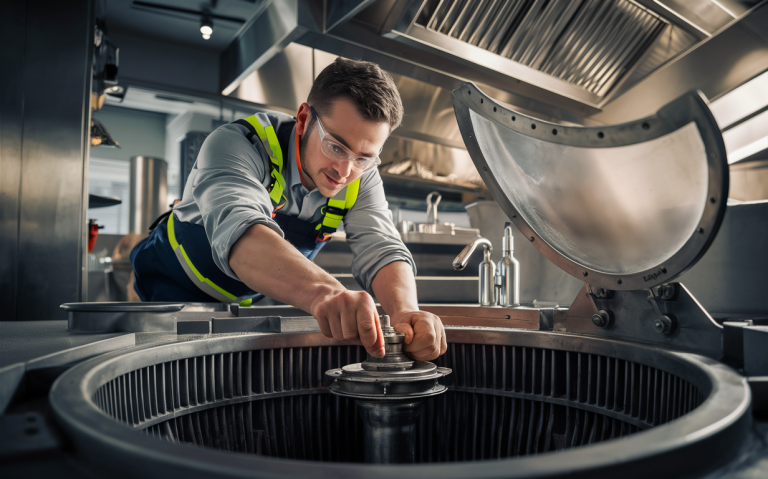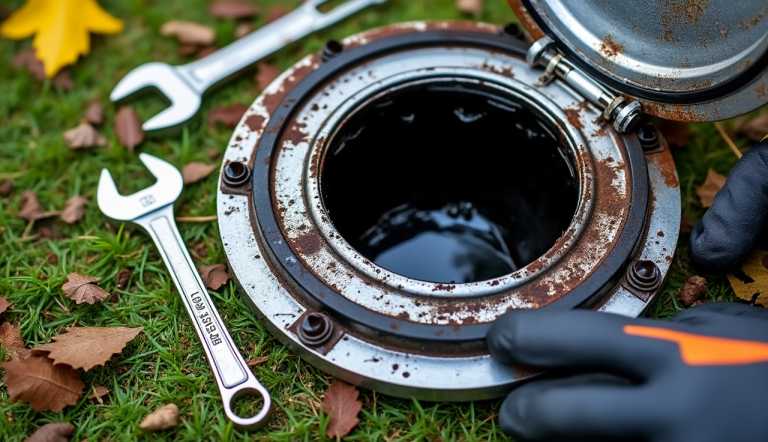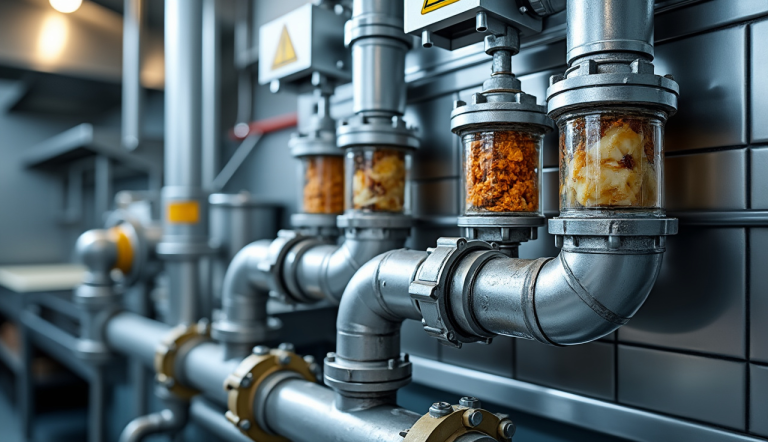Effective Tips for Removing Grease Oils and Solids During Grease Trap Pumping
Removing grease oils and solids during grease trap pumping is a critical process for maintaining the efficiency and hygiene of your plumbing system. This article will guide you through the steps and considerations required for effective grease trap maintenance, ensuring your system runs smoothly and prevents costly repairs.
Key Takeaway
- Grease trap pumping involves removing accumulated grease, oils, and solids to prevent blockages.
- Regular maintenance is crucial for the longevity of your plumbing system.
- Properly performed grease trap cleaning ensures compliance with local regulations and environmental safety.
- Professional services can offer efficient and thorough cleaning.
Why Regular Grease Trap Pumping is Essential
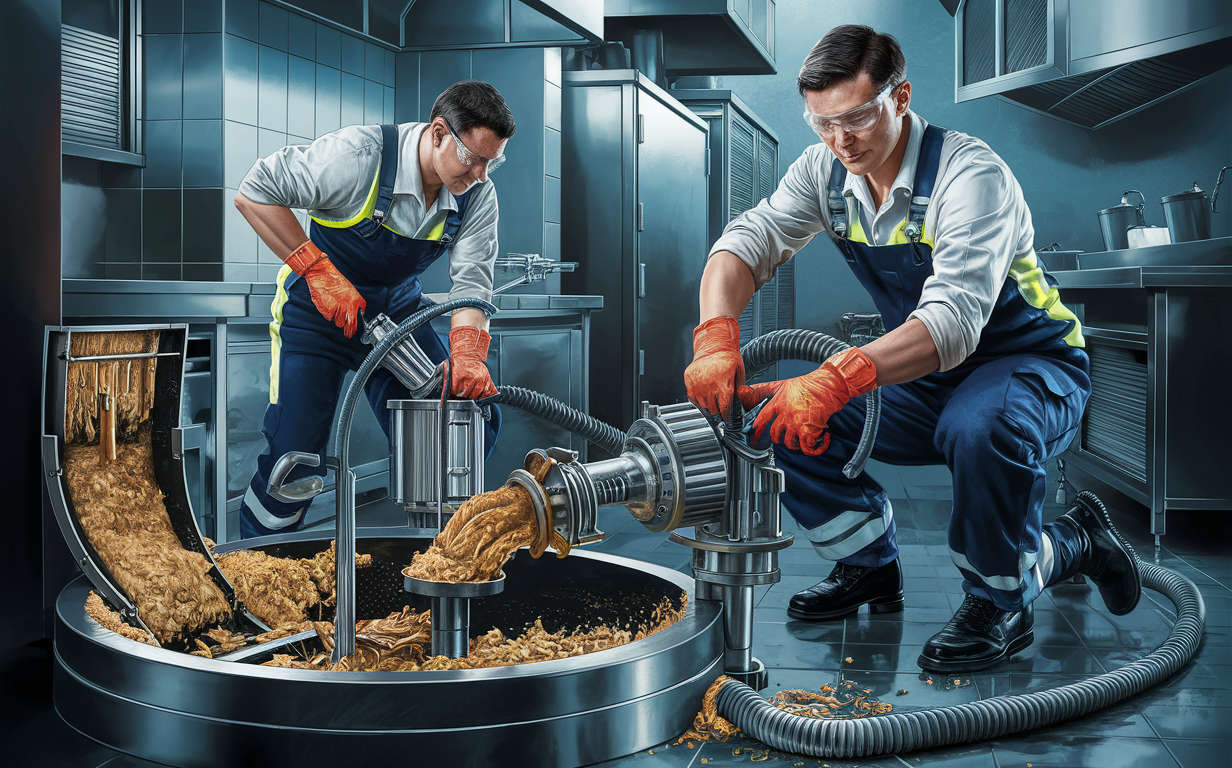
Grease traps act as the first line of defense against fats, oils, and grease (FOG) entering your plumbing system. Over time, these substances accumulate and can cause significant blockages and damage if not regularly removed. Regular pumping ensures the longevity and functionality of your plumbing system, preventing costly repairs and downtime.
The Mechanics of Removing Removing Grease Oils and Solids Trap Pumping
Grease trap pumping involves several steps, each crucial for an effective cleaning. Here’s how it’s typically done:
- Accessing the Grease Trap: The first step is to locate and open the grease trap.
- Measuring the Content: Before pumping, the amount of grease and solids is measured to determine the trap’s current state.
- Pumping Out Grease and Solids: A vacuum truck is used to remove the accumulated grease, oils, and solids.
- Scraping and Cleaning: After pumping, the interior surfaces of the trap are scraped and cleaned to remove any residual grease.
- Inspecting the Trap: The trap is inspected for any damage or wear and tear.
Tools and Equipment Needed
Professionals like United Sewer & Septic use various tools and equipment for grease trap pumping. Some essential items include:
- Vacuum Truck: For pumping out the grease and solids.
- Scrapers and Brushes: To clean the interior surfaces of the trap.
- Protective Gear: Ensures the safety of the personnel performing the task.
Frequency of Grease Trap Pumping
The frequency of grease trap pumping depends on the volume of grease your establishment generates. Restaurants and food service establishments typically need more frequent pumping, often every 1-3 months.
Regular monitoring will help determine the best schedule for your specific needs.
Benefits of Professional Grease Trap Pumping Services
Hiring professional services for grease trap pumping offers numerous benefits:
- Efficiency: Professionals have the tools and expertise to perform the job quickly and effectively.
- Compliance: Ensures that your establishment complies with local health and safety regulations.
- Preventative Maintenance: Regular professional cleaning can spot potential issues before they become major problems.
Choosing the Right Service Provider
When selecting a grease trap pumping service, consider the following:
- Experience: Look for providers with a solid track record and experience in grease trap maintenance.
- Reputation: Check reviews and testimonials from other customers.
- Services Offered: Ensure they offer comprehensive services, including emergency response.
Common Issues Caused by Poor Grease Trap Maintenance
Failing to maintain your grease trap can lead to several issues:
- Blockages: Accumulated grease can block pipes, causing backups and overflows.
- Foul Odors: Grease and food waste can produce unpleasant smells.
- Health Hazards: Unclean grease traps can harbor bacteria and pests.
- Environmental Damage: Improperly managed grease can contaminate local water sources.
How to Identify a Full Grease Trap
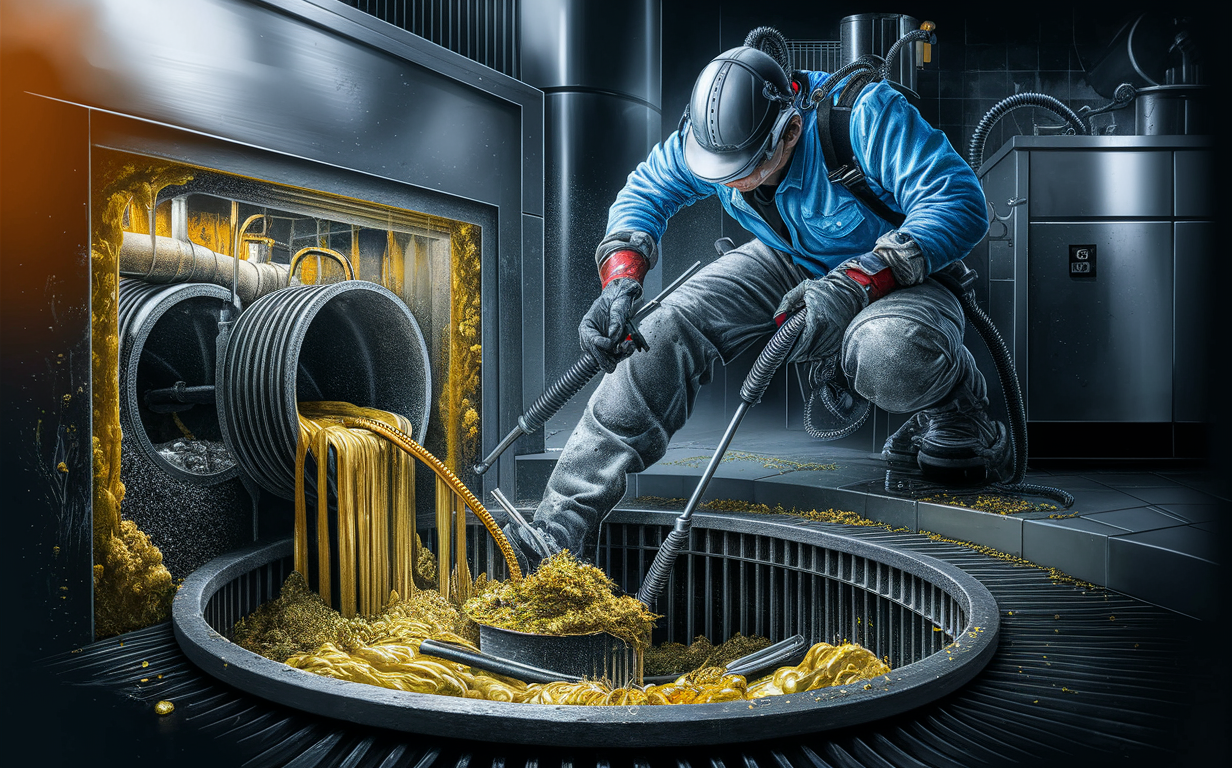
Several signs indicate that your grease trap is full and needs pumping:
- Slow Drainage: Water drains slowly from sinks and dishwashers.
- Grease in Drain Lines: Visible grease in the drain lines.
- Foul Odors: Unpleasant smells emanating from the trap.
- Frequent Blockages: Regular clogs and backups in the plumbing system.
Steps to Take When Your Grease Trap is Full
- Schedule a Pumping Service: Contact a professional service to pump and clean the trap.
- Document the Service: Keep records of all maintenance activities for compliance purposes.
- Review Maintenance Schedule: Adjust the pumping schedule if necessary to prevent future issues.
The Environmental Impact of Grease Trap Maintenance
Proper grease trap maintenance is not only crucial for your plumbing system but also for the environment. Accumulated grease can pollute local water sources if not correctly managed.
By maintaining your grease trap, you contribute to environmental conservation and comply with regulations aimed at protecting water quality.
Understanding Local Regulations
Different regions have specific regulations regarding grease trap maintenance. Familiarize yourself with local requirements to ensure compliance. These regulations often dictate:
- Frequency of Pumping: How often grease traps need to be cleaned.
- Waste Disposal: Proper disposal methods for the removed grease and solids.
- Record Keeping: Maintaining documentation of all maintenance activities.
Tips for Maintaining Your Grease Trap
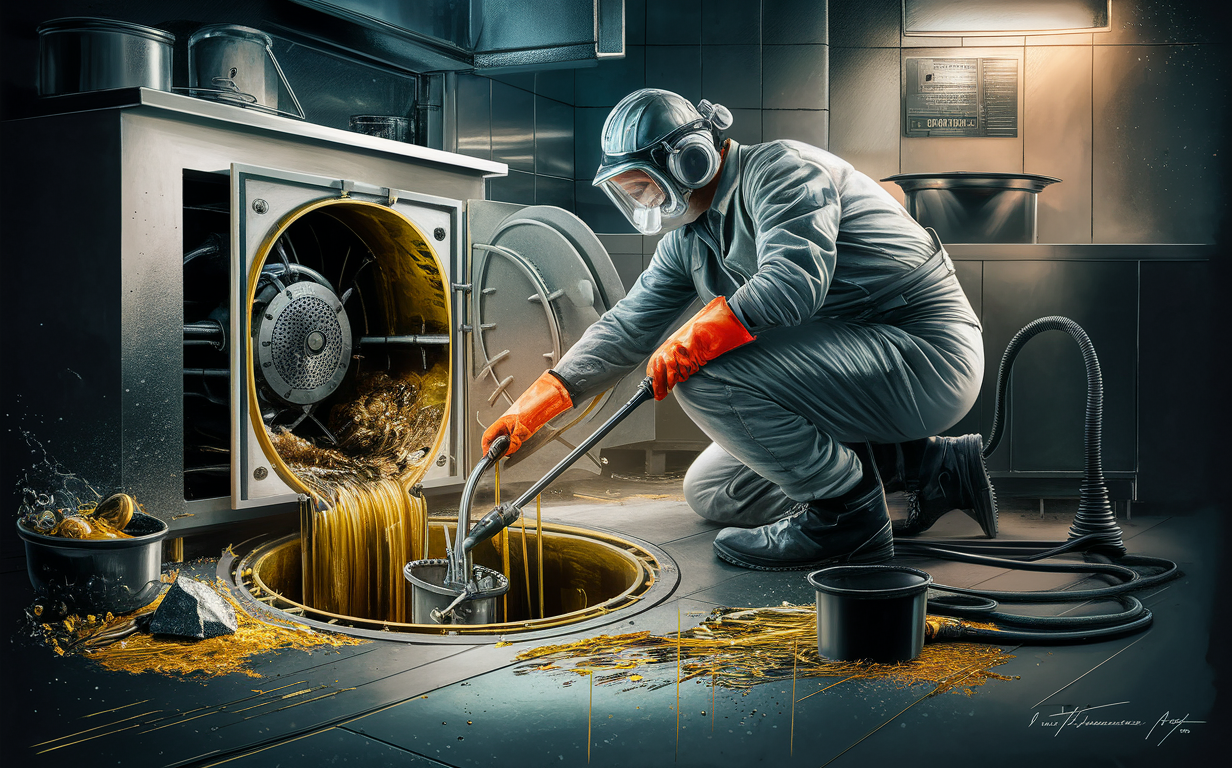
Regular maintenance is key to preventing issues and prolonging the life of your grease trap. Here are some tips:
- Monitor Grease Levels: Regularly check the grease levels in your trap.
- Establish a Routine: Set a consistent schedule for inspections and pumping.
- Train Staff: Ensure that employees are aware of proper grease disposal methods.
- Use Grease-Reducing Enzymes: These can help break down grease and prevent buildup.
Best Practices for Grease Disposal
Proper grease disposal is crucial for maintaining your trap and preventing blockages. Consider these best practices:
- Avoid Pouring Grease Down the Drain: Dispose of grease and oils in designated containers.
- Use Strainers: Install strainers in sinks to catch food particles and solids.
- Educate Employees: Train staff on the importance of proper grease disposal.
The Future of Grease Trap Technology
Advancements in technology are making grease trap maintenance more efficient and effective. Innovations include:
- Smart Grease Traps: Equipped with sensors to monitor grease levels and alert when pumping is needed.
- Automated Cleaning Systems: Reduce the need for manual cleaning and maintenance.
- Eco-Friendly Solutions: New methods for recycling and repurposing waste grease.
The Role of Data in Grease Trap Maintenance
Data-driven insights can improve the efficiency of grease trap maintenance. By analyzing data on grease accumulation and maintenance activities, businesses can optimize their schedules and reduce costs.
Comparison of Traditional vs. Smart Grease Traps
| Feature | Traditional Grease Traps | Smart Grease Traps |
|---|---|---|
| Monitoring | Manual | Automated |
| Maintenance Alerts | None | Real-time notifications |
| Environmental Impact | Higher | Lower |
| Initial Cost | Lower | Higher |
| Long-term Savings | Medium | High |
Frequency of Grease Trap Maintenance
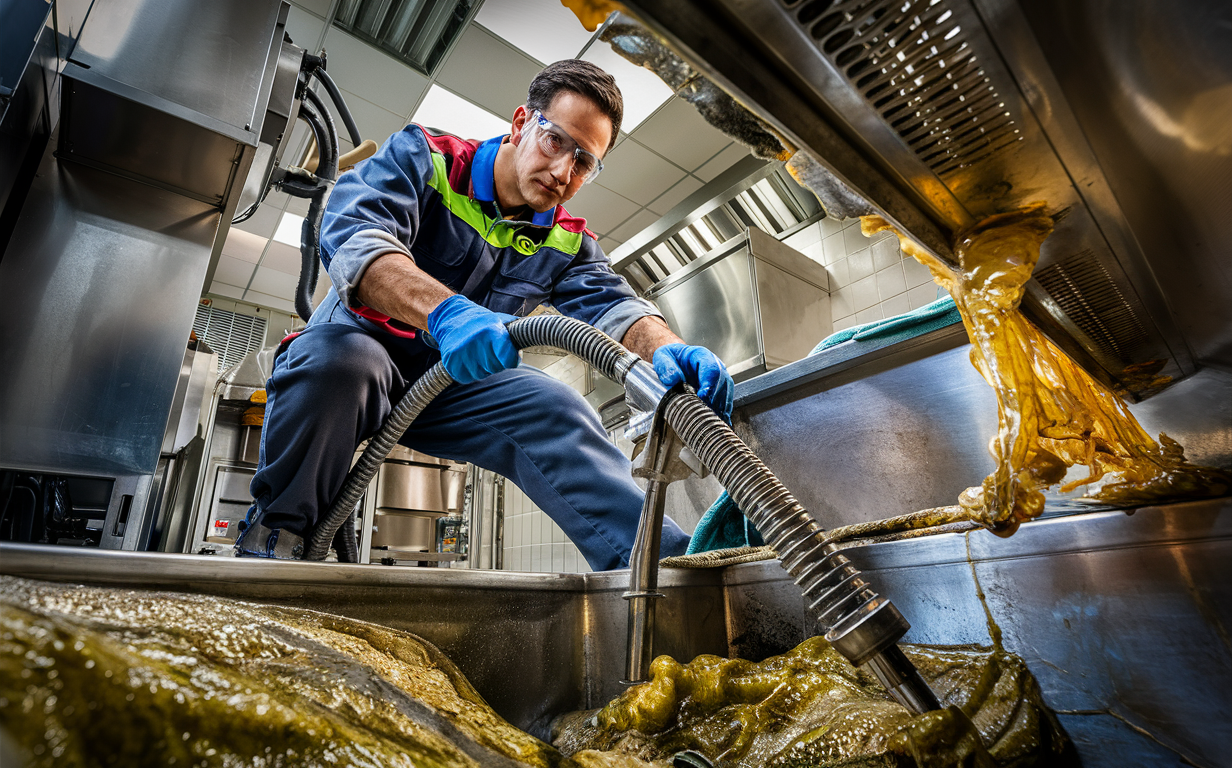
| Type of Establishment | Suggested Maintenance Frequency |
|---|---|
| Fast Food Restaurants | Every 1-2 months |
| Full-Service Restaurants | Every 2-3 months |
| Cafes and Coffee Shops | Every 3-4 months |
| Schools and Institutions | Every 4-6 months |
| Commercial Kitchens | Monthly |
Common Causes of Grease Trap Blockages
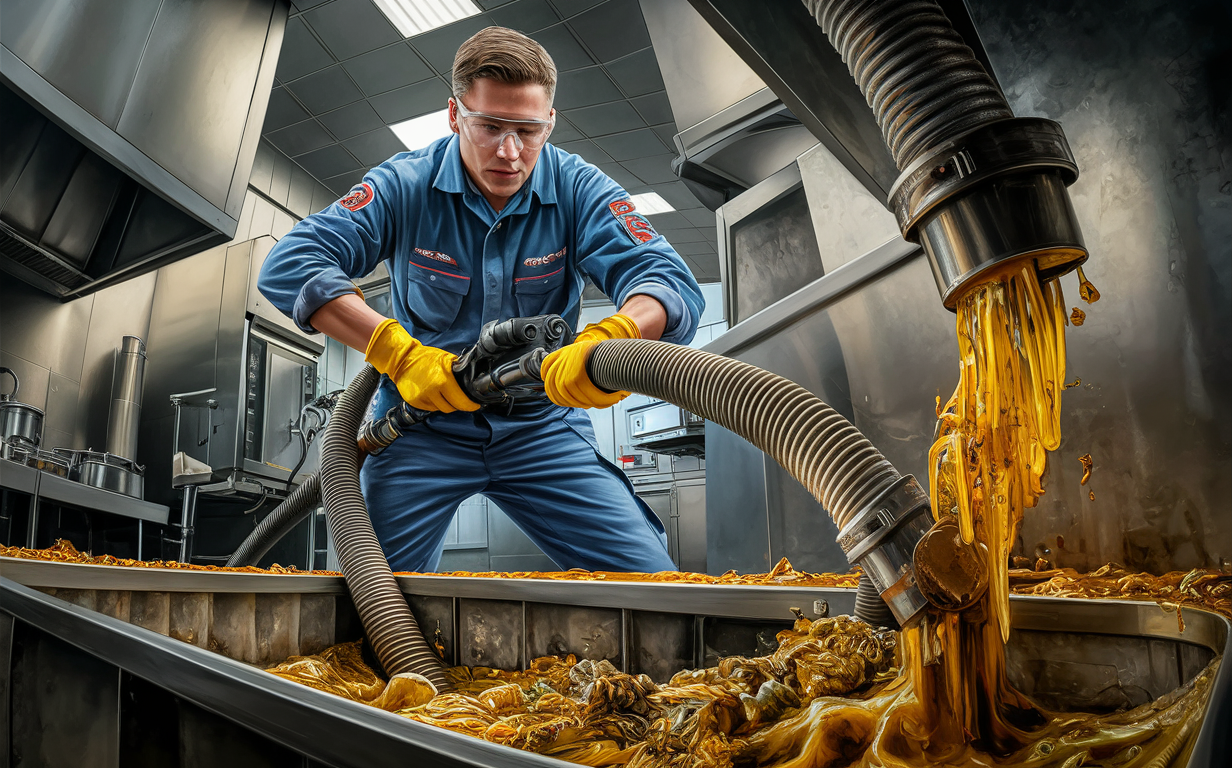
- Improper grease disposal
- Lack of regular maintenance
- Overfilled grease trap
- Food particles and solids entering the trap
- Infrequent inspections
Conclusion
Removing grease oils and solids during grease trap pumping is essential for maintaining a functional and efficient plumbing system. Regular maintenance prevents blockages, reduces environmental impact, and ensures compliance with local regulations.
By understanding the process and benefits of professional grease trap pumping services, you can keep your establishment running smoothly and avoid costly repairs.
For more information or to schedule your grease trap pumping service, contact United Sewer & Septic at (888) 845-CLOG (2564). Our experienced team is ready to help you maintain a clean and efficient plumbing system.

